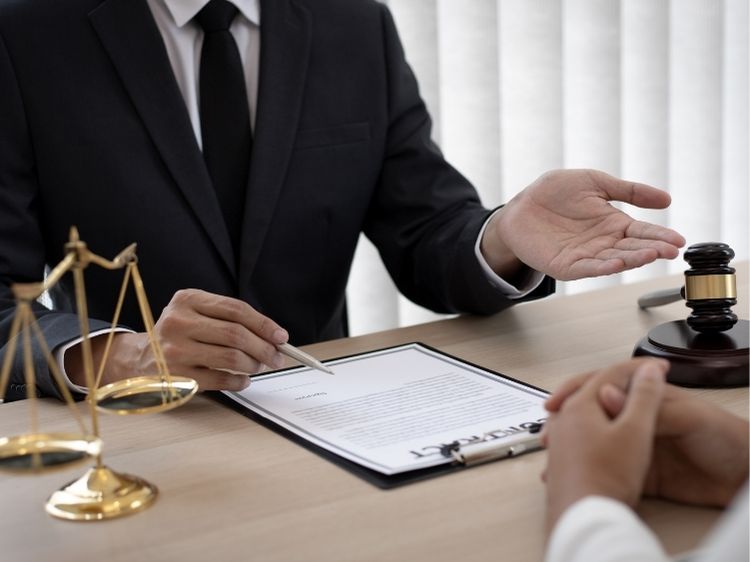Product liability is a complex legal concept that ties closely with the idea of negligence. It plays a crucial role in protecting consumers from defective products while holding manufacturers, distributors, and retailers accountable for harm caused by their products. But how does negligence factor into product liability, and what does it mean for consumers and businesses alike? Let’s dive into the world of negligence and product liability to explore their impact on everyday life and the legal implications they bring along.
What Is Negligence?
In the legal sense, negligence occurs when a party fails to exercise the standard of care that a reasonable person would under similar circumstances. This failure can lead to accidents, injuries, or damages that the negligent party is held responsible for. For example, if a driver ignores traffic rules and causes an accident, they may be considered negligent.
Negligence doesn’t just apply to car accidents or personal injuries—it also extends to product liability. If a manufacturer fails to design, produce, or label a product correctly and it leads to injury or damage, the company could be held liable under the theory of negligence.
Elements of Negligence in Product Liability
When it comes to product liability, proving negligence requires demonstrating specific elements:
- Duty of Care: The manufacturer or seller owed a duty to the consumer to provide a safe product.
- Breach of Duty: They failed to meet that duty, either through design flaws, manufacturing errors, or inadequate warnings.
- Causation: The breach directly caused the injury or harm.
- Damages: The consumer suffered actual harm or damages due to the defective product.
To hold a party accountable, the injured party must show that all of these elements are present. Without them, a negligence claim in product liability may not succeed.
Product Liability: Types and Theories
Product liability itself falls under three main categories: manufacturing defects, design defects, and failure to provide adequate warnings or instructions. Each of these categories can involve claims based on negligence, but they can also fall under strict liability or breach of warranty.
1. Manufacturing Defects
This occurs when the product deviates from its intended design, making it dangerous or defective. The error happens during the production process, affecting a limited number of units. In these cases, negligence may involve failing to follow proper quality control measures.
2. Design Defects
Here, the product’s design is inherently flawed, making it unsafe even when manufactured correctly. In negligence claims, the argument often revolves around whether the manufacturer should have foreseen the risk posed by the design and taken steps to mitigate it.
3. Failure to Warn (Marketing Defects)
This involves the lack of proper instructions or warnings regarding the product’s use or potential dangers. A negligence claim may arise if the manufacturer didn’t adequately communicate risks, leading to harm.
How Does Negligence Tie Into Product Liability?
Negligence is often central to product liability cases, but it’s important to note that not all product liability claims are based on negligence. In some cases, strict liability comes into play, where a manufacturer can be held liable regardless of fault. However, proving negligence can offer a stronger case, particularly when there’s clear evidence that the manufacturer failed to meet a reasonable standard of care.
For instance, if a company knew about a potential flaw in its product and did nothing to fix it, that could be considered gross negligence. This would significantly increase the likelihood of the company being found liable for any resulting damages.
The Reasonable Standard of Care
What does “reasonable” mean in the context of product liability? Courts often look at what a reasonable manufacturer, in the same situation, would have done. Would they have tested the product more thoroughly? Would they have issued a recall sooner? Negligence in product liability cases often hinges on these questions.
Key Differences Between Negligence and Strict Liability
While negligence focuses on whether the defendant’s actions (or lack thereof) were reasonable, strict liability doesn’t require proof of fault. Instead, the plaintiff only needs to show that the product was defective and caused harm. This difference makes strict liability more favorable for consumers, as they don’t need to prove the manufacturer was negligent.
However, negligence claims can sometimes lead to higher damages, especially in cases of gross negligence or recklessness. In these situations, courts may award punitive damages in addition to compensatory damages.
Real-World Examples of Negligence and Product Liability
Let’s take a look at a couple of famous product liability cases that highlight negligence.
1. The McDonald’s Hot Coffee Case
In 1992, Stella Liebeck sued McDonald’s after spilling a cup of hot coffee that caused severe burns. While many saw this case as frivolous, the court found that McDonald’s had been negligent in serving coffee at dangerously high temperatures, which they knew could cause serious injuries.
2. Ford Pinto Fuel Tank Design
In the 1970s, the Ford Pinto became infamous for its faulty fuel tank design, which made it prone to catching fire in rear-end collisions. Ford had known about the defect but decided not to fix it, calculating that it would be cheaper to settle lawsuits than to recall the cars. This gross negligence led to massive lawsuits and settlements.
The Importance of Negligence in Consumer Safety
Negligence claims in product liability cases are vital for consumer protection. They serve as a check on manufacturers, ensuring they adhere to safety standards. If companies know they’ll be held accountable for failing to meet these standards, they’re more likely to invest in safer designs, better manufacturing processes, and clearer warnings.
For consumers, understanding negligence and product liability is crucial when pursuing legal action for defective products. It gives them a framework to prove their case and seek compensation for injuries or damages.
FAQs on Negligence and Product Liability
Q1: What’s the difference between negligence and strict liability in product liability cases? Strict liability doesn’t require proof of negligence; the plaintiff only needs to show that the product was defective and caused harm. Negligence, on the other hand, requires proving that the manufacturer failed to meet a reasonable standard of care.
Q2: Can I file a product liability claim even if I didn’t follow the product’s instructions? It depends on the case. If the product’s defect caused harm regardless of user error, you may still have a claim. However, failure to follow instructions could weaken your case.
Q3: What are punitive damages in negligence cases? Punitive damages are awarded in cases of gross negligence or willful misconduct, aiming to punish the defendant and deter similar behavior in the future.
Q4: How long do I have to file a product liability claim? The statute of limitations varies by state, but it’s typically between two and four years from the date of injury or discovery of the defect.
Conclusion
Negligence and product liability are closely intertwined in the realm of consumer protection. By understanding these legal concepts, both businesses and consumers can better navigate the complexities of product-related injuries and claims. For businesses, it’s essential to maintain rigorous safety standards to avoid negligence claims, while consumers must remain informed about their rights when they’re harmed by defective products.
Ultimately, negligence ensures that companies are held accountable for their actions—or inactions—when it comes to product safety. As consumers, knowing the legal avenues available to us can make all the difference when it comes to seeking justice for harm caused by faulty products.
Authoritative Links (Plain URLs)
- www.cpsc.gov (U.S. Consumer Product Safety Commission)
- www.nolo.com (Legal Information)
- www.findlaw.com (Product Liability Resources)





